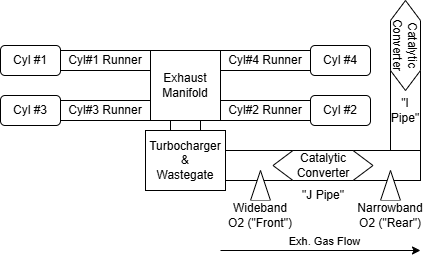Closed Loop Fueling & Trims (Wideband/Narrowband O2 Sensors)

Concepts
Air-Fuel Ratio/Lambda
Gasoline engines operate on the principle of fuel combustion. By measuring the mass of air entering a cylinder prior to fuel injection, an calculation can be made to determine the corresponding mass of fuel based on the desired air-fuel ratio of combustion.
Using this fuel mass, a calculation can be made to approximate the necessary length of duty time ("pulse width") that the to-be-fired cylinder's corresponding injector should be commanded to open. The longer the injector stays open, the more fuel mass is injected directly into the cylinder, and the less time the injector is open for, the less fuel is injected. This injection time is called the injector pulse width, or "IPW", where width refers to the duration of time the injector should remain open.
Other physical effects are factored during this calculation, such as the fuel's delivery pressure behind the injector (fuel rail pressure), temperature of both air and coolant, and so on, in order to estimate the precise amount of fuel being delivered as accurately as possible. Any modifications that affect the IPW calculation are considered compensations (for physical effects) or trims (for controlling a target air-fuel ratio).
Closed Loop Fueling & Trims
There are two primary methods for an Engine to measure the mass of fuel injected into each cylinder.
